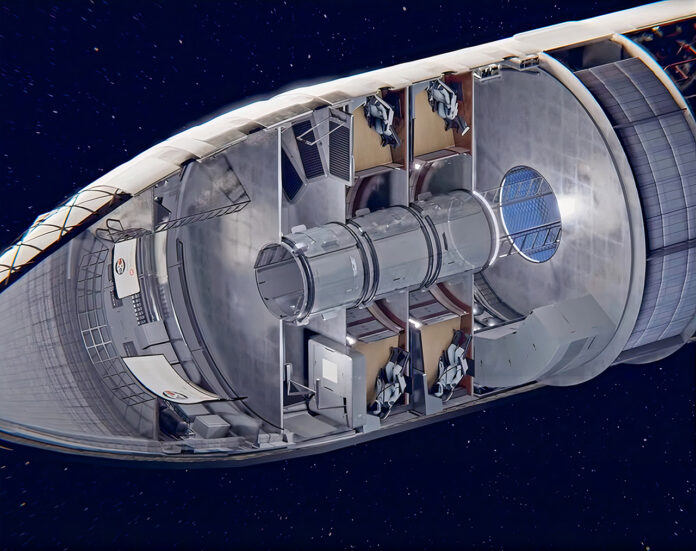The Artemis program last year picked three different commercial proposals to compete for the $2.89 billion fixed-price lunar lander contract. The three were:
- A consortium led by Blue Origin, the Jeff Bezos’ space company, and including contributions from Lockheed Martin, Northrop Grumman, and Draper.
- A consortium of 25 different companies led by Dynetics with support from its parent, Leidos, a company that has worked with NASA for more than 60 years.
- SpaceX, with its Starship, a fully integrated, reusable spaceship designed to transit, descend and land, and then launch and return to Earth in a single configuration.
NASA in the past Apollo Program worked with commercial partners providing sub-components for the project. The Lunar Excursion Module (LEM) was built by Grumman, now part of Northrop Grumman, and a contract partner in the Blue Origin bid. The first two proposed landing solutions looked much more like what NASA would have conceived during the Apollo Program. But surprisingly, the space agency has chosen SpaceX in announcing its selection yesterday.
The SpaceX lander, really an adapted Starship currently much like the ones undergoing iteration after iteration (with most blowing up), will be launched from Earth using a mated heavy-lift reusable first stage. It will achieve lunar orbit where NASA’s Artemis astronauts will rendezvous and dock with it after being launched separately by the Space Launch System (SLS), the Boeing-built single-use rocket that is well over budget and behind schedule. The spacecraft succeeding Apollo is the Orion, built by Lockheed Martin.
The plan is to have two of the astronaut crew transfer from Orion to the Starship lander, descend to the surface, explore for as much as a week, and then head back to rejoin Orion and return to Earth. The Starship will remain in orbit where it can be repeatedly used for future astronaut missions.
SpaceX calls its lunar model the HLS Starship with the acronym standing for the Human Landing System. In the concept drawing appearing with this article, it shows a cabin, two airlocks, and significant cargo space. The airlocks give the astronauts two points of entry and exit to access the lunar surface.
Stated Steve Jurczyk, NASA’s acting administrator, “We should accomplish the next landing as soon as possible. If they [meaning SpaceX] hit their milestones, we have a shot at 2024,” the original target date for Artemis set by the Trump administration. The contract calls for SpaceX to make a crewless test flight of the lander before being used by astronauts to return to the lunar surface.
NASA for a considerable period of time has seemed reluctant to give SpaceX its due. Boeing and the United Alliance have always won contracts where SpaceX demonstrated equal capability at a lower cost.
According to Kathy Lueders, Associate Administrator for Human Exploration and Operations Mission Directorate at NASA, she sees choosing SpaceX as the most logical partnership choice. Reusability, which SpaceX has more experience than any other commercial vendor, or even NASA itself, has to have been considered a significant advantage. The agency’s confidence factor appears to be growing as SpaceX continues to demonstrate the reliability of its Falcon 9 and Heavy rockets and the Dragon crew capsule. And SpaceX has the confidence of the market to raise billions of dollars through equity financing. The week alone it harvested $1.16 billion in new funding.
In another one of its pioneering ventures the company has taken the lead in creating a global mesh telecommunications network operating from low-Earth orbit. Starlink, the name SpaceX has given to this project, has been using Falcon 9 rockets to launch 60 telecommunications satellites almost every month. Currently, 1,300 are in orbit with plans to grow to over 7,500 to provide global high-speed Internet access. User trials appear to be going very well to date. The launching of reusable Falcon 9 first stage rockets is setting a record pace while lowering the cost to customers who are lining up to use SpaceX services, and setting back commercial and national launchers who are feeling the competition.
While down in Boca Chica, Texas, where the Starship project and its prototypes are being built, rolled out, and tested, SpaceX is operating in ways NASA never contemplated. In the most recent Starship prototype test, the rocket failed its landing. That was only two weeks ago and already a new Starship is on the launch pad ready to go with changes to its configuration incorporated from what was learned from the failure of the last. This iterative process SpaceX hopes will lead to the first Starship achieving low-Earth orbit before year-end.
Neither Blue Origin nor Dynetics can match the performance and current pace of innovation happening at SpaceX. So maybe I shouldn’t be surprised that NASA has chosen them even though, from past decisions made, it seems to run counter to the agency’s practices.









[…] may see its first orbital flight in the next few weeks. A modified version of the Starship will be NASA’s first lunar lander designed to ferry astronauts from the Lunar Gateway to the Moon and back. Starship is big by any […]